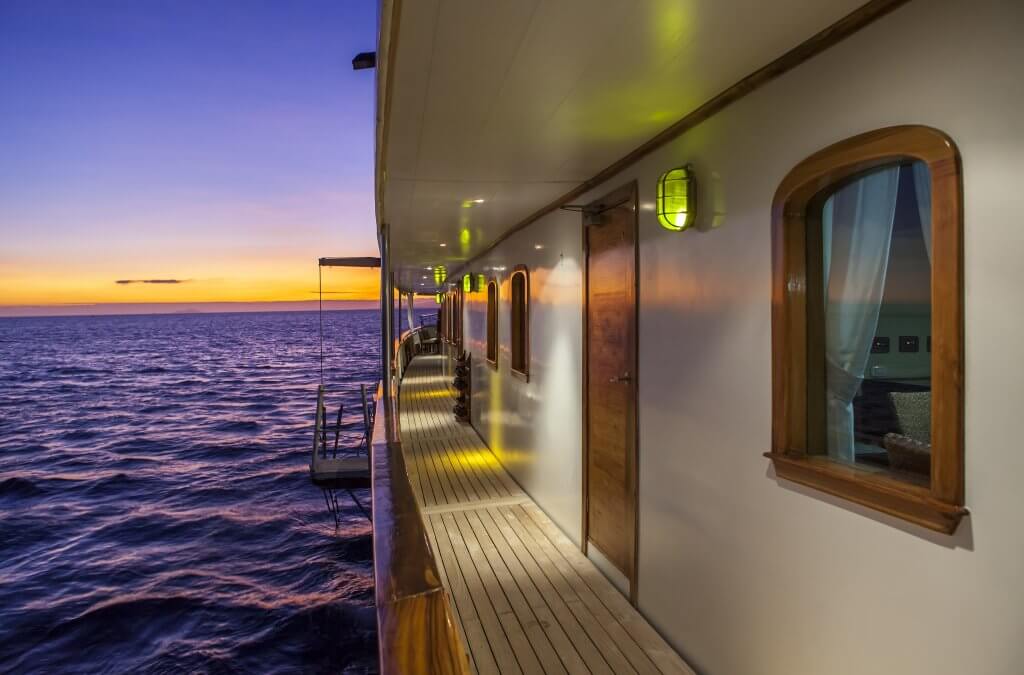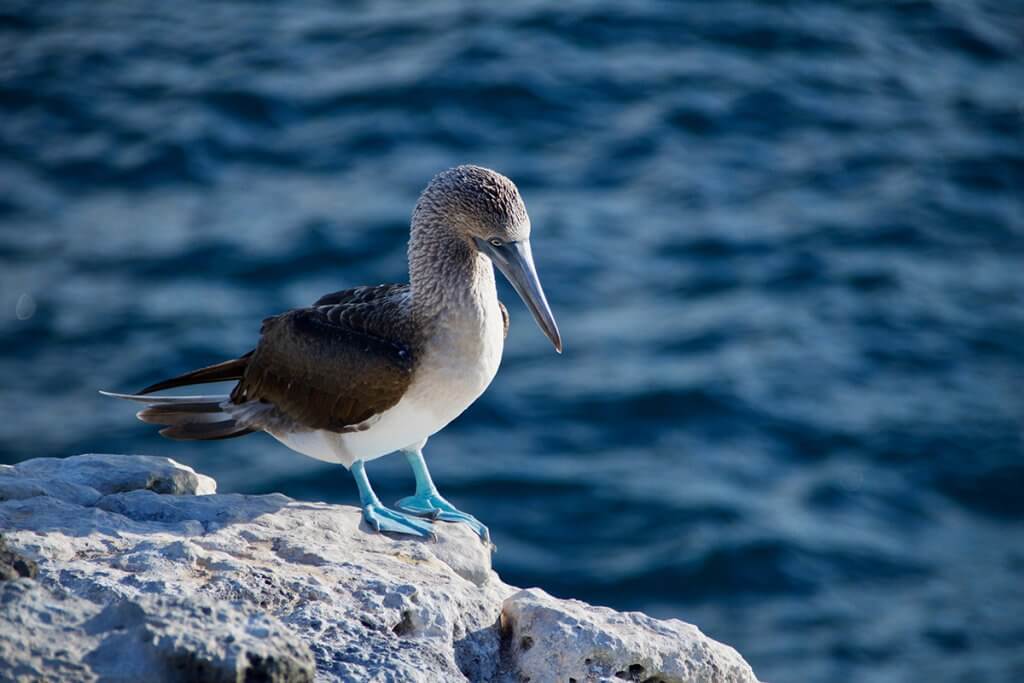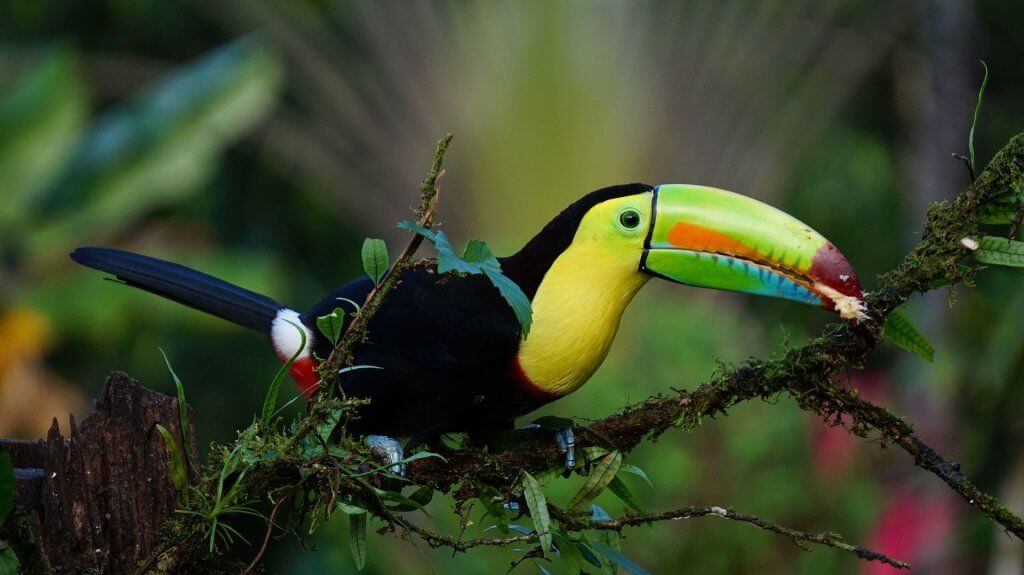The Ultimate Guide To Wildlife In The Galapagos Islands
The Galapagos Islands are home to a wide variety of unique and fascinating wildlife. Different species can be seen during different months, so there is a perfect time of year to embark on your luxury tour of the Galapagos Islands based on the animals you want to see.
Breeding seasons, migration patterns and weather conditions all play a role in the wildlife you may see in the Galapagos Islands each month. To ensure you get to see the animals that interest you the most during your luxury tour, we have created a month by month guide to wildlife in the Galapagos Islands…
GALAPAGOS WILDLIFE DURING TROPICAL RAINY SEASON
The islands’ warm, tropical climate during the rainy season – which runs from December until the end of June – often consists of delightful temperatures of around 80 to 90°F with short, daily rain showers.
The water temperatures are also warmer during the rainy season, making it the perfect time to enjoy the array of watersports the Galapagos Islands are famed for. From swimming to snorkeling to scuba diving, the rainy season is a pleasant time to witness the marine life that resides here. There is typically less migratory wildlife during this time, but you may still witness colorful fish, marine iguanas, Galapagos turtles and sea lions.
VIEW OUR BESPOKE GALAPAGOS ISLANDS TOURS
On land, many species make the most of the warmer weather and begin their breeding and nesting seasons. The landscapes are particularly lush, with blooming flowers adding pops of color around the islands.
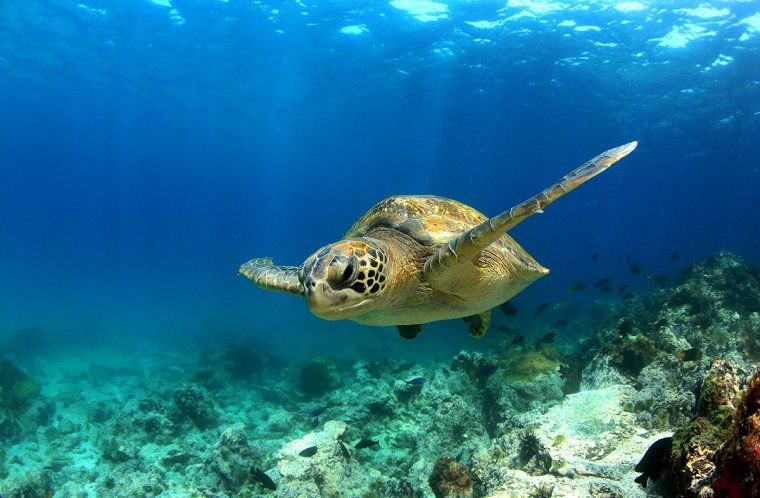
DECEMBER
In December, keep an eye out for:
- Green Sea Turtles mating: males will typically nuzzle the female’s head and/or gently bite the back of her neck or rear flipper.
- Waved albatross hatchlings: the first of the hatchlings start appearing around the Galapagos Islands. The best place to see them is Española Island.
- Giant Tortoise eggs: eggs begin to hatch in December and will continue up until around April. The largest populations of Giant Tortoises live on the Santa Cruz highlands and Alcedo Volcano on Isabela Island.
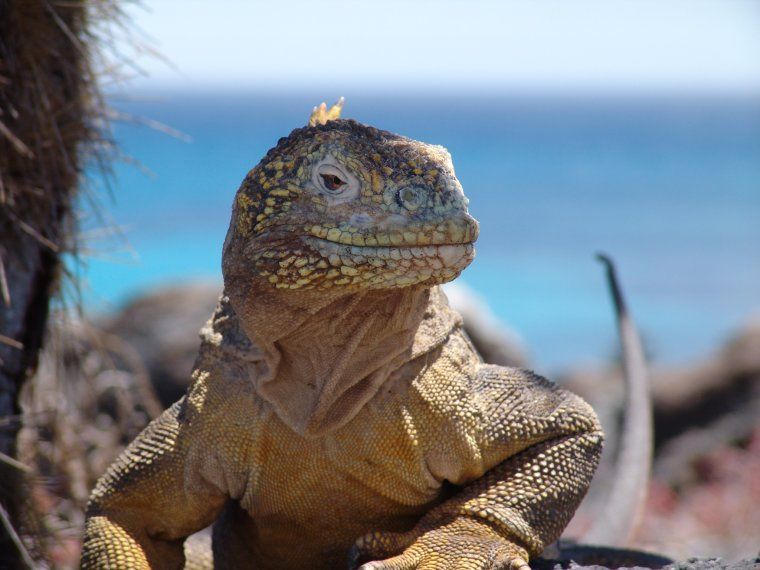
JANUARY
In January, you can expect to see:
- Land birds nesting: after the first rain of the season, land birds like Finches, Warblers, Flightless Cormorants, and Nazca Boobies begin to nest.
- Brightly coloured Marine Iguanas: male Marine Iguanas are usually pale and yellowish-orange in color with a dark brown back. On Española Island during mating season, you’ll notice mature males assuming bright, red coloration.
- Green Sea Turtle eggs: these fascinating creatures land on the beaches of the Galapagos Islands in January to start laying their eggs. They can lay up to 200 eggs in a period of up to three hours.
- Land Iguana eggs: after mating, a female iguana will dig a nest in which she buries her eggs. A female can bury a clutch of around 20 eggs at a time. Both male and female Land Iguanas are very territorial and will protect their nests against any threat.
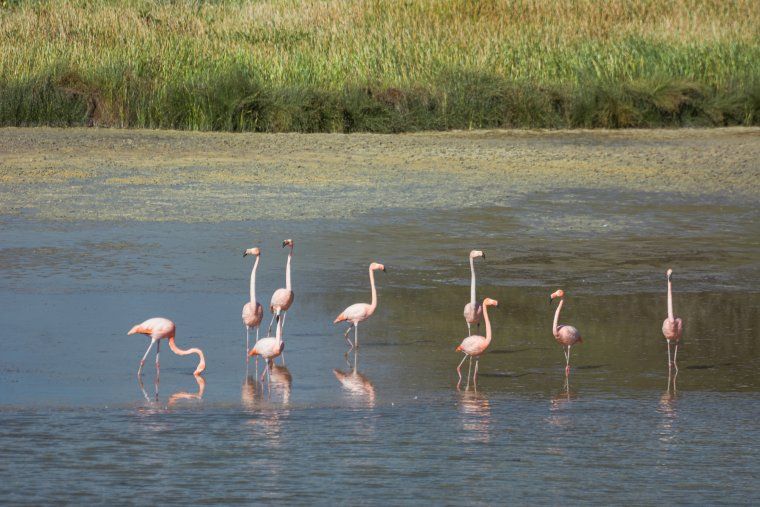
FEBRUARY
Wildlife is active in February, including:
- Greater Flamingos: Greater Flamingos, the largest living species of flamingo, begin their nesting season on Floreana Island. This involves building nests that look like mounds of mud by the water.
- White Cheeked Pintails: February marks the beginning of breeding season for these distinctive birds.
- Nazca Boobies: their nests are in cliffs and crevasses; in February, their nesting season is coming to an end.
- Galapagos Dove: this endemic species can produce up to three clutches of eggs throughout the year, but their peak nesting season is February.
- Giant Tortoises: after hatching underground, the baby Giant Tortoises have to dig their way up to the surface. This can take around 30 days and can be witnessed in February.
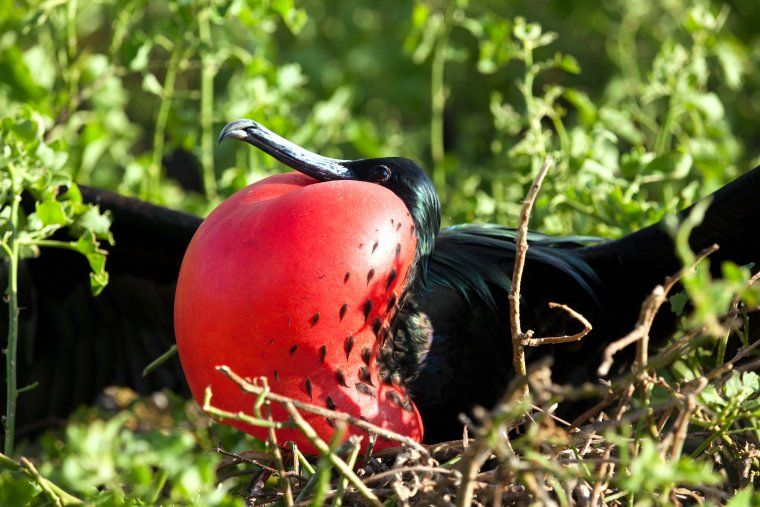
MARCH
If you’re visiting the Galapagos Islands in March, look out for:
- Nesting Marine Iguanas: visit Fernandina Island to see Marine Iguanas nesting in their sandy nests, laying between one to six eggs. While females guard the nests at the beginning of this process, they will leave the eggs to incubate for around 95 days.
- Nesting Frigate birds: male Frigate birds will build twig nests in low shrubs and then attract a female to share the new home. On San Cristobal and Genovesa Island in March, nesting season begins and you can see females caring for their eggs.
- Waved Albatrosses: also known as the Galapagos Albatross, these fascinating birds can spend years at sea without ever touching land. In March, colonies arrive back to the Galapagos on Española Island.
Ideal weather conditions and a bustling marine life also make March an Ideal for snorkeling and scuba diving.
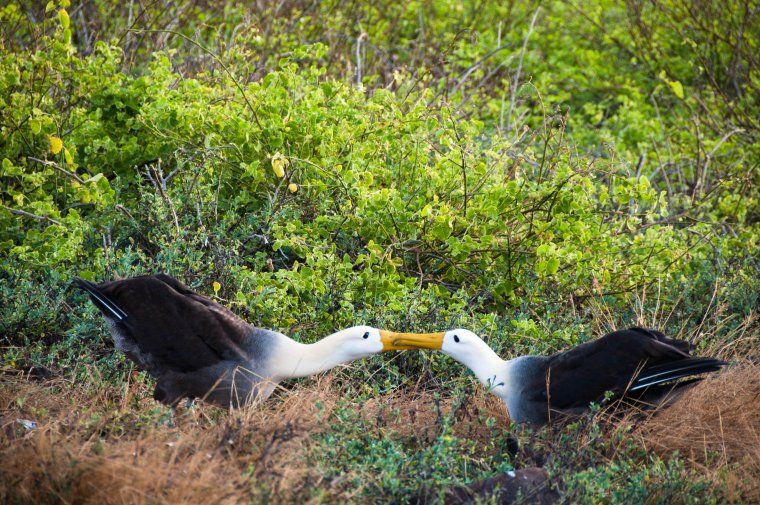
APRIL
April is another busy month for Galapagos wildlife. Highlights include:
- Waved Albatrosses: they continue to arrive on Española Island and begin their spectacular courtship which includes rapid bill circling, beak clacking, a waddle and making incredible cow-like sounds. They lay their eggs between April and June.
- Giant Tortoises: hatching season ends in April and you’ll catch the last of the babies emerging from their underground nests.
- Sea Turtles: as the eggs begin to hatch, crowds of baby Galapagos Sea Turtles make their way to the ocean. They will typically emerge in the evening and are most commonly found on Santa Cruz and Floreana Island.
- Land Iguanas: it can take up to a week for baby Land Iguanas to dig their way to the surface after hatching.
- Blue-footed Boobies: these beautiful birds show off their iconic blue feet during courtship. Their courting season takes place at different times on different islands, but in April, North Seymour is a good time to witness the birds taking part in their unique high-stepping courtship dance.
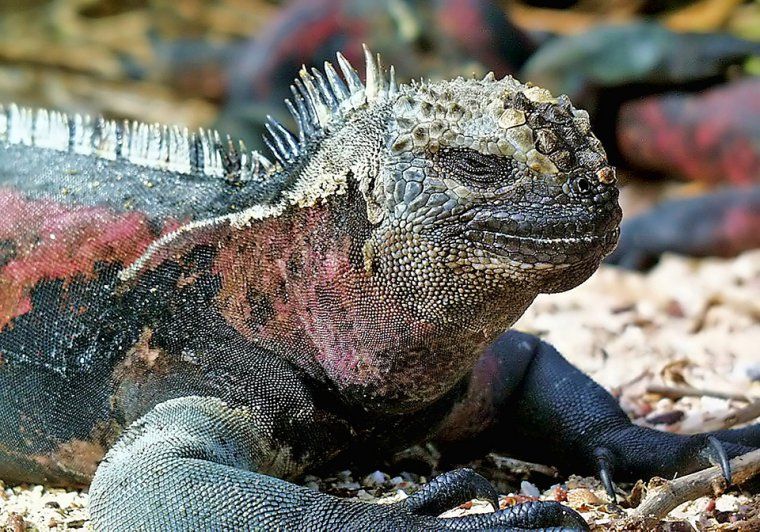
MAY
A lot of the April wildlife activity in the Galapagos Islands continues on into May:
- Sea Turtles: they continue to hatch in the evenings. Head to Gardner Bay and Puerto Vegas for the best chance of seeing the babies take their first steps.
- Blue-footed Bobbies: their courtship ritual continues as females select a male based on their dancing technique and blue feet. The pair remains monogamous for at least that breeding season.
- Waved Albatrosses: they are the only albatross species that breeds exclusively in the tropics and will only lay a single egg between April and June.
- Marine Iguanas: baby Marine Iguanas start to hatch in May. From the moment they emerge, they are on their own.
- Penguins: on Fernandina Island and the west coast of Isabela Island, Galapagos Penguins are nesting. As well as being one of the smallest penguins in the world, the Galapagos Penguin is endemic to the Galapagos Islands.
May is a great month for birdwatching, with Nazca Boobies, Magnificent Frigates, Flightless Cormorants, Red-footed Boobies and Greater Flamingos all visible during this time.
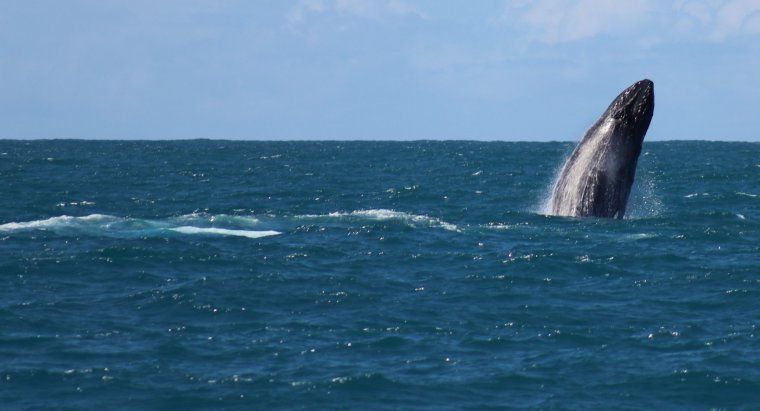
JUNE
As the wet season comes to an end, there is a shift in wildlife activity across the Galapagos Islands. In June, you can witness:
- Nesting Giant Tortoises: before they make their journey back to the highlands of Santa Cruz, females dig holes in the soil in the low lands ready for her 2 to 16 eggs. The eggs are incubated by the sun for around 130 days.
- Humpback Whales: as the cold currents reach the Galapagos in June, the seas fill with krill, plankton, mackerel, sardines and anchovies which attract migrating whales. In June, they can start to be seen between Isabela and Fernandina islands.
- Migrating birds: many birds come to the Galapagos Islands for the dry season and can be seen migrating during June, including the Black Petrels that arrive from New Zealand.
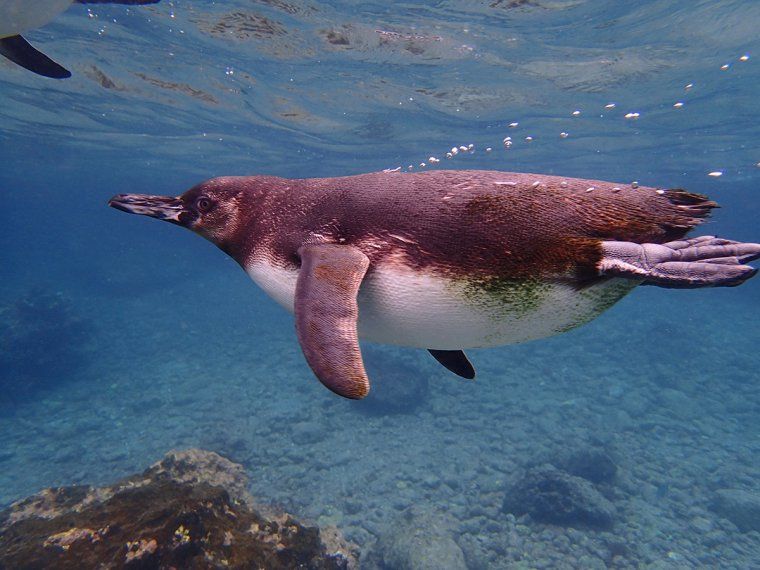
GALAPAGOS WILDLIFE DURING SUBTROPICAL DRY SEASON
From July until the end of November, the Galapagos Islands boast cooler and drier conditions. Temperatures are typically around 69.8 to 78.8°F and there is a blanket of fog lightly dressing the skies.
Although the water is colder during dry season, you can still enjoy watersports by wearing a wetsuit. Facing the cooler water temperatures is worth it though as the dry season brings an abundance of local and migratory marine wildlife to the Galapagos Islands. You may see Galapagos penguins, whale sharks, and dolphins to name a few.
VIEW OUR BESPOKE GALAPAGOS ISLANDS TOURS
While the flora and fauna isn’t as vibrant during the dry season, the subtle colors add character and mystery to the islands. On land, birds are beginning to hatch and courting rituals are in full swing.
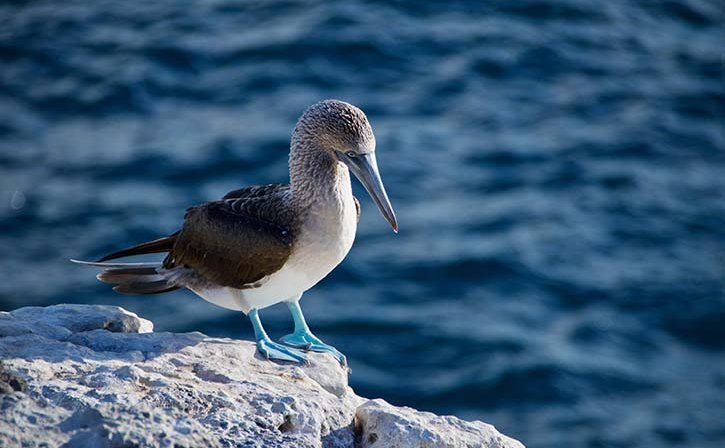
JULY
July marks the start of the dry season in the Galapagos Islands. During this month, keep an eye out for:
- Nesting sea birds: the abundance of food in the cooler waters sees many of the Galapagos Islands’ sea birds nesting during this time, including Masked, Red-footed and Blue-footed Bobbies, Magnificent and Great Frigate Birds, Galapagos Penguins, Greater Flamingos, American Oystercatchers and Flightless Cormorants.
- Baby Moorhens: also nesting during this time, Moorhens are often seen with their babies in tow in July.
- Breeding sea lions: populating the shorelines across the Galapagos Islands, it will be hard to miss colonies of sea lions during your tour. In July, the breeding season is in full swing.
- Whales: in July, Galapagos Blue Whales actively feed and breed around the islands, transient pods of Orcas start appearing and Humpbacks continue migrating. Other whale species spotted in the Galapagos Islands include Minke, Sei, Bryde, Sperm and Short-finned Pilot.
- Dolphins: although they can be spotted here all year round, July is an ideal time of year to see Galapagos Dolphins as they arrive in greater numbers to feed.
- Mating Lava Lizards: this fascinating lizard boasts bright colorings and can be found on every island in the Galapagos, except Wolf, Darwin and Genovesa. In July, they begin to mate and males battle in territorial push-up competitions.
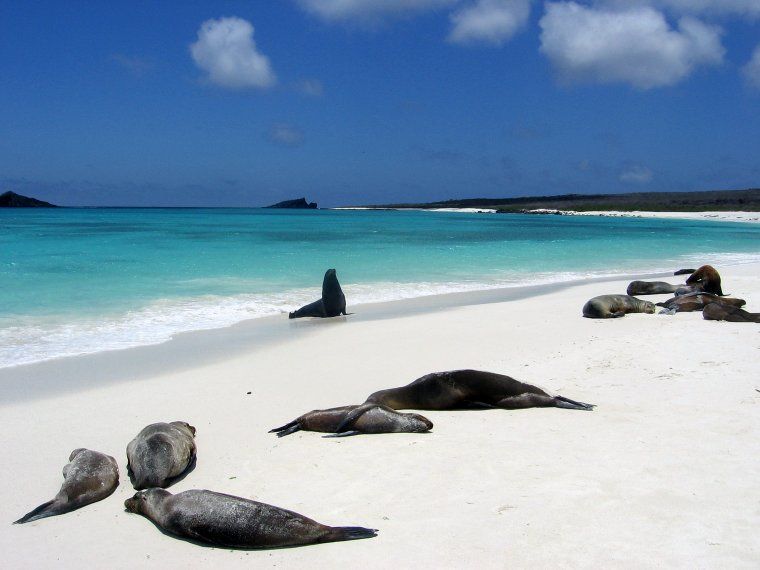
AUGUST
If your luxury tour of the Galapagos Islands is in August, expect to see wildlife such as:
- Galapagos Hawks: these majestic birds begin courting on the islands of Española and Santiago which involves the males making false attacks on the females. While the males are monogamous, females can mate with up to seven males in a nesting period.
- Frigate birds: it can take around 50 days, but in August frigate bird chicks begin to hatch. As they are born without feathers, they are brooded for two weeks.
- Giant Tortoises: adults can be seen making their slow ascent back into the highlands of Santa Cruz for dry season.
- Sea lion pups: the first wave of pups are starting to be born around the Galapagos Islands. Normally, sea lion pups stay with their mother for around a year.
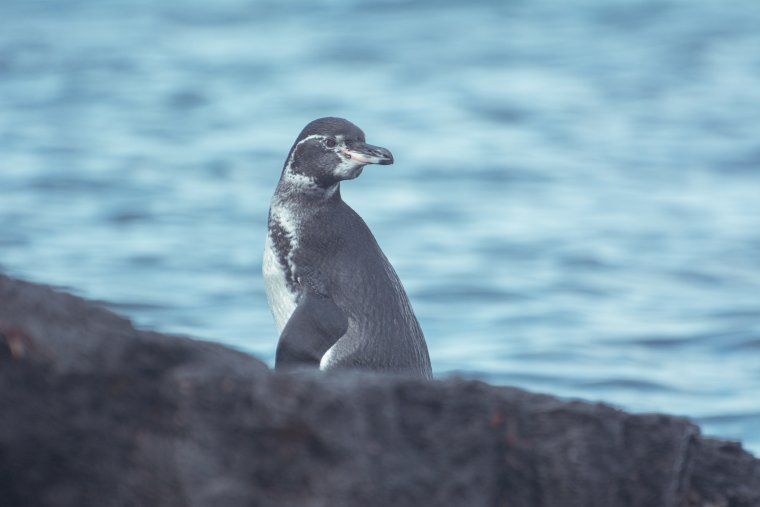
SEPTEMBER
September is an active month, particularly for:
- Galapagos Penguins: the cooler water temperatures and optimal feeding environments bring the Galapagos Penguins out in force, particularly around Bartolome Island and Pinnacle Rock. This is a great time to see them up close on snorkeling adventures.
- Baby sea lions: despite being heavily reliant on their mother for the first six months of their life, they are well developed at birth and very active from a young age.
- Sea birds: with chicks to feed, the Galapagos Islands’ sea birds are also quite active at their nesting sites, taking advantage of the food rich water.
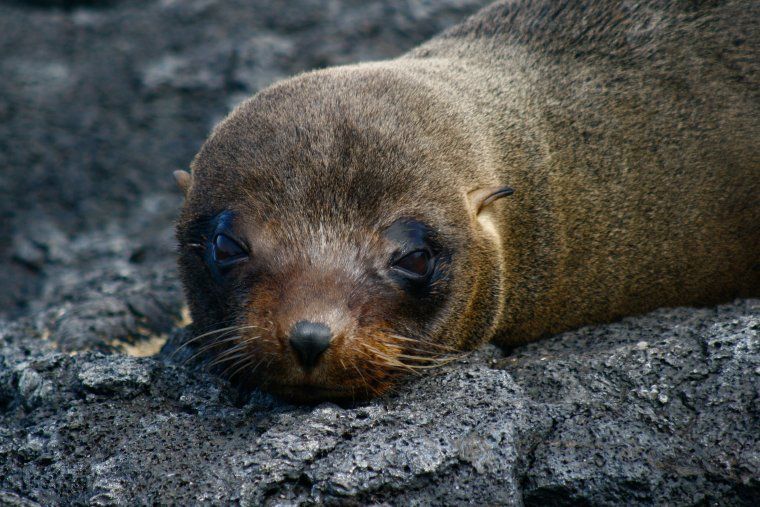
OCTOBER
Visit the Galapagos Islands in October to witness the following wildlife:
- Lava Herons: this beautiful species can breed all year round, but it’s more common between September and March. They are one of the few heron species – and one of the few Galapagos bird species – to nest in solitary pairs rather than in colonies.
- Fur Seals: Galapagos Fur Seals are an endemic species that live on the rocky shores of the western islands. Their mating season begins in October which is particularly important due to their decreasing population.
- Blue-footed Booby chicks: after starting to hatch in July, there are plenty of Blue-footed Booby chicks occupying the islands of Española and Isabela in October.
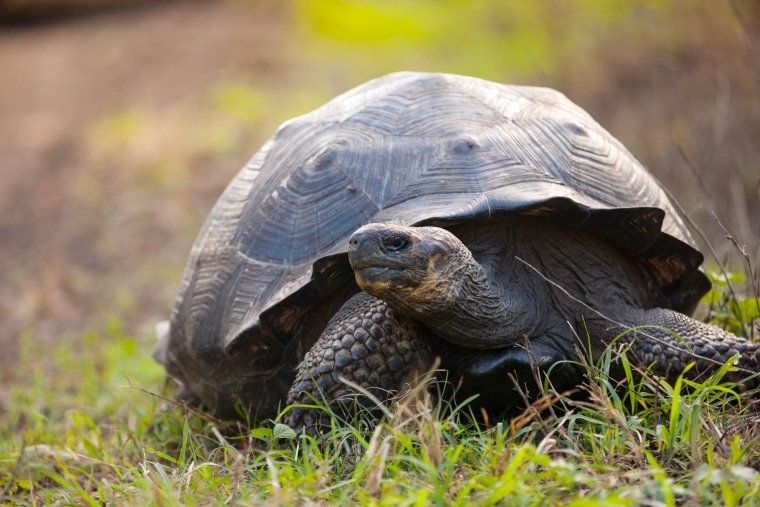
NOVEMBER
November marks the end of the dry season in the Galapagos Islands and with it, comes opportunities for exciting encounters with local wildlife:
- Whale Sharks: it is possible to see Whale Sharks around the northwestern islands, including Wolf and Darwin. Most of the whale sharks that pass by Darwin Arch are adult females measuring an incredible 10–12 m in length.
- Brown Noddies: they are rarely seen near the land as they fly out to warm tropical waters for extended periods however, while in the Galapagos Islands, the Brown Noddy is seen on land for breeding. Their courtship ritual involves a unique nodding movement which gives them their name.
- Baby sea lions: this is a great time to go snorkeling as the baby sea lions are particularly playful and curious.
- Migrating Giant Tortoises: on the hunt for consistent and more nutrient dense vegetation, Giant Tortoises on Santa Cruz will start to migrate to low lands.
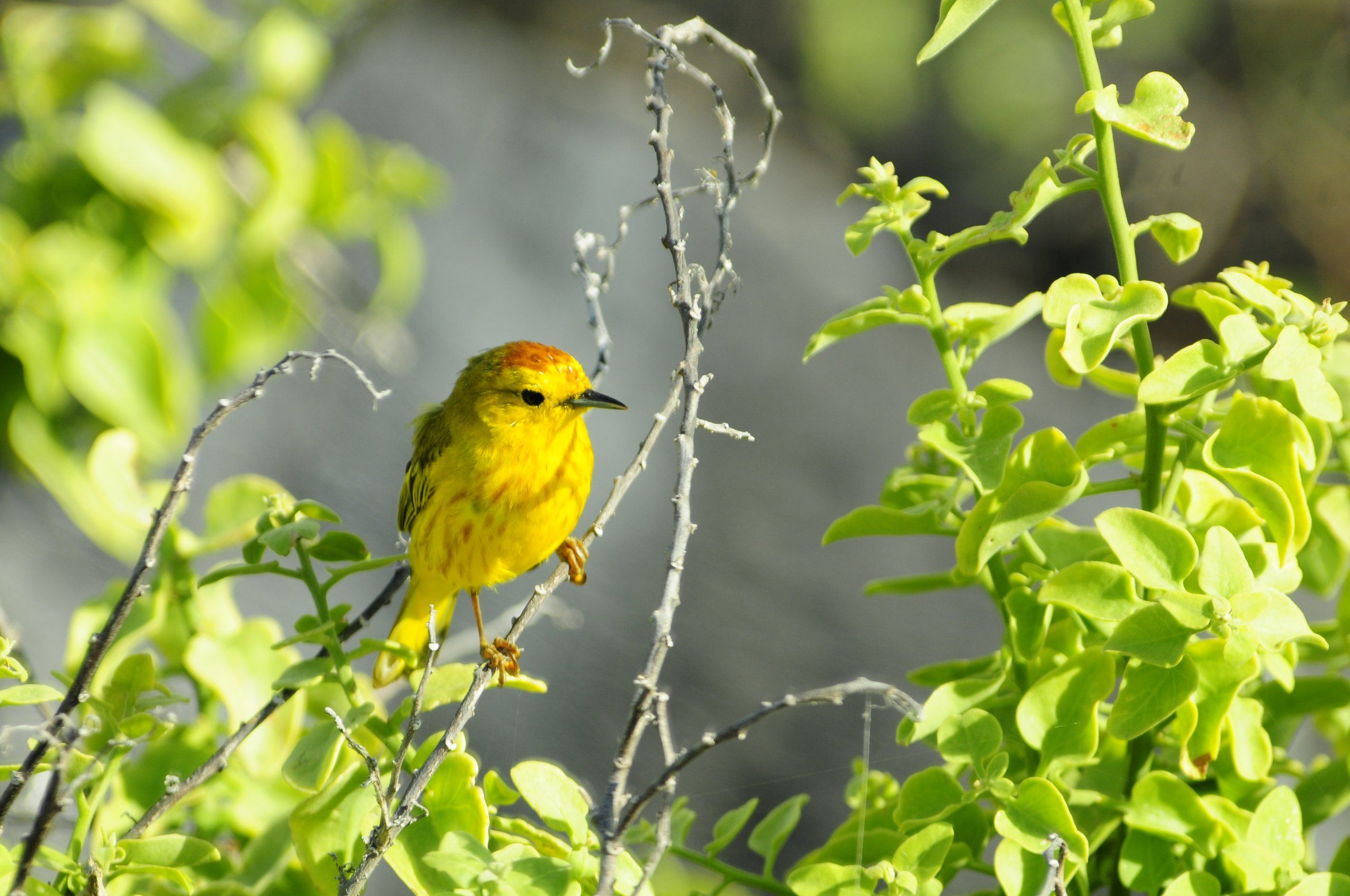
How To See The Best Wildlife In The Galapagos
When planning your luxury tour to the Galapagos Islands, it’s essential you understand the interests and preferences of your group. The wildlife behaviors you’re interested in witnessing, the species that fascinate you the most, and the types of activities that appeal to you will all play an important role in deciding the best time of year to visit the Galapagos Islands.
For more information on bespoke luxury tours to the Galapagos Islands, contact one of our travel experts today.
Tailor-Made Itineraries To The Galapagos Islands
Discover the best wildlife in the Galapagos Islands with a bespoke, luxury tour…
VIEW OUR BESPOKE GALAPAGOS ISLANDS TOURS
